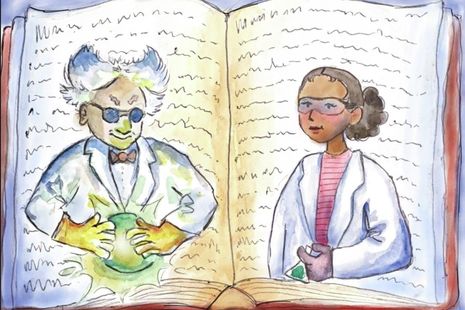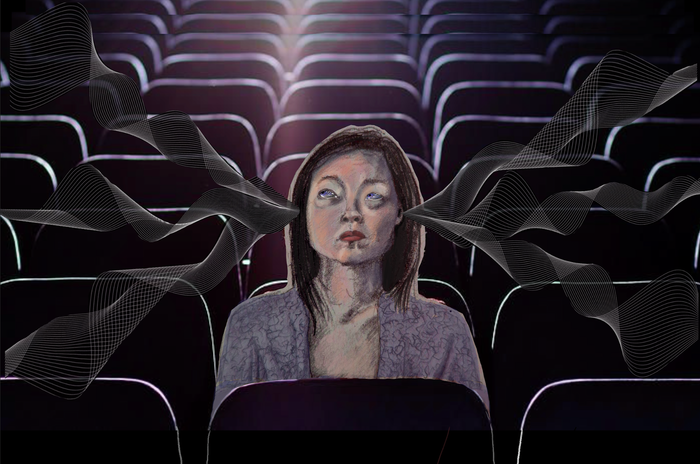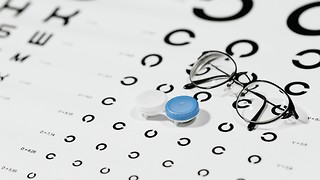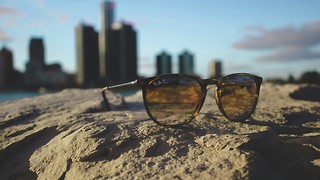From monster makers to crime solvers: scientists get a rewrite
Beatrix Biagini explores how the portrayal of scientists in literature has evolved

What comes to mind when you think of a scientist? An obsessive genius? An eccentric theorist? A mad inventor? How much of this stems from real-life scientists, and how much from a caricatured stereotype shaped by what we read?
Cambridge University Musical Theatre Society’s original ‘1816: The year without a summer’ returned to Cambridge this week. Set in the shadow of the massive volcano Mount Tambora – whose eruption cast a constant cloud of ash across the globe that eponymous summer – the play takes the audience along in the creation of Mary Shelley’s infamous horror story. Her ‘Frankenstein’ reflected a negative portrayal of scientists that has persisted across literature since.
In the novel which undoubtedly won her friend Lord Byron’s challenge to write the scariest story, Shelley outlined her scientist’s desperate and feverish desire to discover the secret of life, and to ultimately create it. But only once successful does Frankenstein fully understand the impact of his creation – with the work depicting the resulting and tormenting trail of suffering that pursues him in the physical form of his vengeful monster.
“Dr Rosylnn Haynes identifies five key stereotypes of scientists in literature”
Literary scholar Dr Rosylnn Haynes identifies five key stereotypes of scientists in literature. Shelley’s ‘Frankenstein’ embodies her label of an ‘Evil Alchemist’ in his greed and desire for knowledge that was perhaps best left unknown, but also fulfils her image of a ‘Helpless Scientist’ in his careless creation of a monster with consequences he did not foresee. Dr Haynes also suggests the categories ‘Silly Scientist’, ‘Inhuman Researcher’ and ‘Scientist as a Hero’ – this list almost entirely undesirable in its traits. ‘Scientist as a hero’ is the only exception, with the sole yet notable example given being Francis Bacon’s unfinished ‘New Atlantis’ – a tale of discovering an advanced island whose governing institution acted as key inspiration for The Royal Society.
A multitude of undesirable scientists’ character traits can easily be found in many major works of fiction. Earlier than Frankenstein, Christopher Marlowe’s ‘Doctor Faustus’ warns of the danger of surpassing the limit of human ability and intellect, while Robert Louis Stevenson’s ‘Jekyll’ in ‘The strange case of Dr Jekyll and Mr Hyde’ similarly enforces the notion of fear related to isolated experimentation through Jekyll (and Hyde’s) untimely death. We do not see much of Professor Mortarty’s STEM skills, but the mathematician, Sherlock Holmes’ Napoleon of Crime, maintains the negative STEM aesthetic – pale, cadaverous and isolated. On a slightly lighter, yet ultimately still negative portrayal, Jules Verne’s ‘Around the World in 80 Days’ presents something of a ‘silly scientist’ in Phileas Fogg’s determined persistence and eccentric nature.
Dr Haynes’s paper was written in 1989, and while positive examples of scientists in literature before this time are scarce, more modern novels – specifically in crime and science fiction – have broken this trend.
“presented not as a secluded and hostile character, but rather a relatable, intelligent and driven operator”
Pathologists and forensic scientists are routinely portrayed as positive in impact, their work rigorous and useful to the admittedly usually more charismatic detectives. In recent years, they have gone front and centre of detective fiction as main protagonists such as Patricia Cornwell’s heroine (and forensic scientist) Dr Kay Scarpetta, who is presented not as a secluded and hostile character, but rather a relatable, intelligent and driven operator.
Similarly, Sarah Yarwood-Lovett’s detective Dr Nell Ward, this time a botanist, is presented as a passionate and meticulous ecologist cracking murder cases through her knowledge of flora and fauna, further demonstrating this change in view of science from a mysterious threat to a method of logical and curious thinking.
It is in science fiction that we see scientists take on the nearest to heroic roles, showcasing their ingenuity and moral compass in high-stakes environments. Examples of this include mechanical engineer Mark Watney in ‘The Martian’, surviving after being left for dead on Mars, and computer scientist Kyle Davis communicating extra-terrestrially in ‘Factoring Humanity’ by Robert J Sawyer.
Physicists seem to get a better press, perhaps because some novelists are physicists – such as astrophysicist Carl Sagan who wrote ‘Contact’, a story documenting his supersmart and determined scientist, Dr Eleanor Arroway, and her voyage to make contact with aliens. Astrophysicists also get a good write up in this year’s bestseller, Taylor Jenkins Reid’s ‘Atmosphere’, which presents female astronaut Joan Goodwin and her NASA colleagues in a positive light. This change is confirmed in a study by Daniel Dotson, who took a snapshot of 80 ‘Physicists in fictional works’, and analysed the traits of scientists in popular media. He classified 72.5% of his sample characters as brave – a surprisingly high statistic for such a positive trait.
So, hopefully when I next introduce myself as a natsci, an image of a heroic, brilliant detective who may save the world will come to mind – rather than one of a lone figure hunched over simmering potions that when imbibed may turn me into a monster.
 News / SU reluctantly registers controversial women’s soc18 December 2025
News / SU reluctantly registers controversial women’s soc18 December 2025 Features / Should I stay or should I go? Cambridge students and alumni reflect on how their memories stay with them15 December 2025
Features / Should I stay or should I go? Cambridge students and alumni reflect on how their memories stay with them15 December 2025 News / Dons warn PM about Vet School closure16 December 2025
News / Dons warn PM about Vet School closure16 December 2025 News / Cambridge study finds students learn better with notes than AI13 December 2025
News / Cambridge study finds students learn better with notes than AI13 December 2025 News / Uni registers controversial new women’s society28 November 2025
News / Uni registers controversial new women’s society28 November 2025










